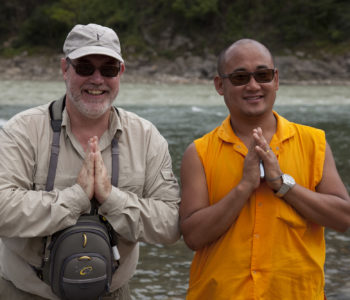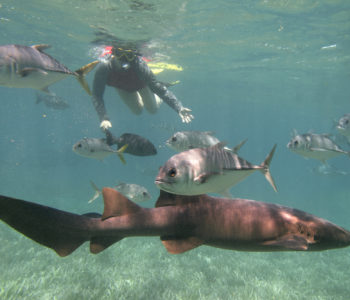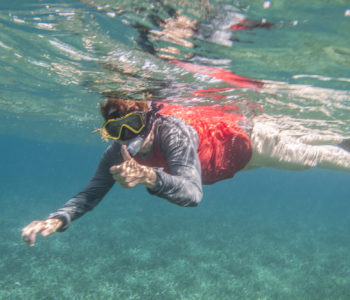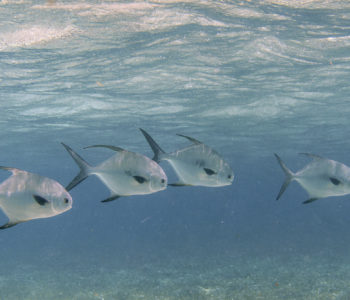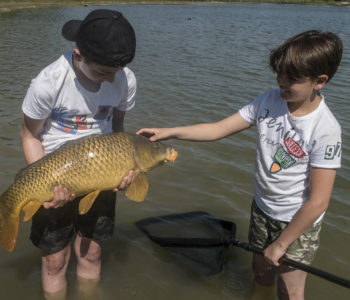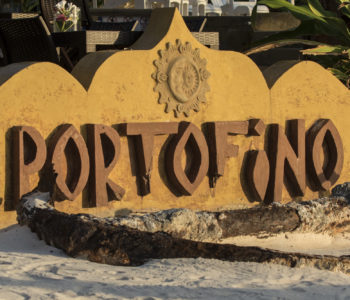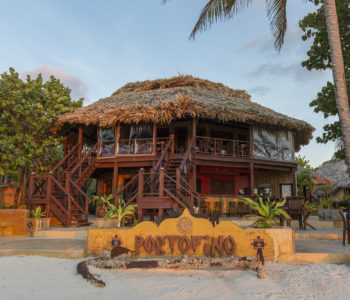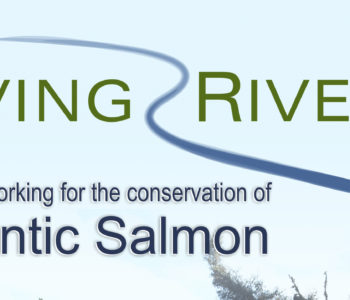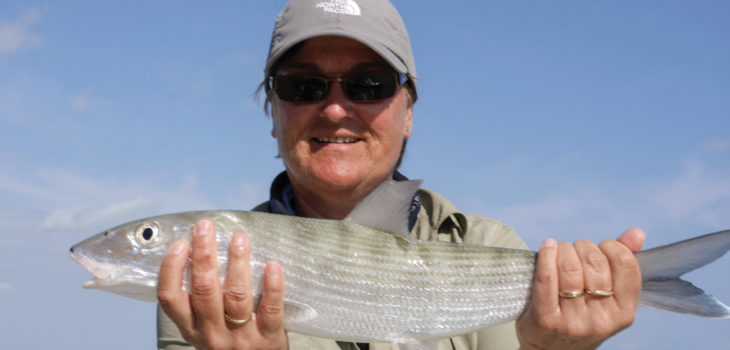
Un-Belize-able! Portofino (4) Fly Fishing
I had no way to influence the timing of our trip because these were the only dates that fitted in with Ina’s work schedule, so I knew beforehand that we would be in Belize during a full moon period. The night before our fishing we had a 100% full moon, and it is not the best prospect to fish on the flats in my experience, and in the experience of quite a number of guides I have spoken with over the years. Most of them told me that a full moon is the worst time of the month to make a trip, especially when you are fishing for bones.
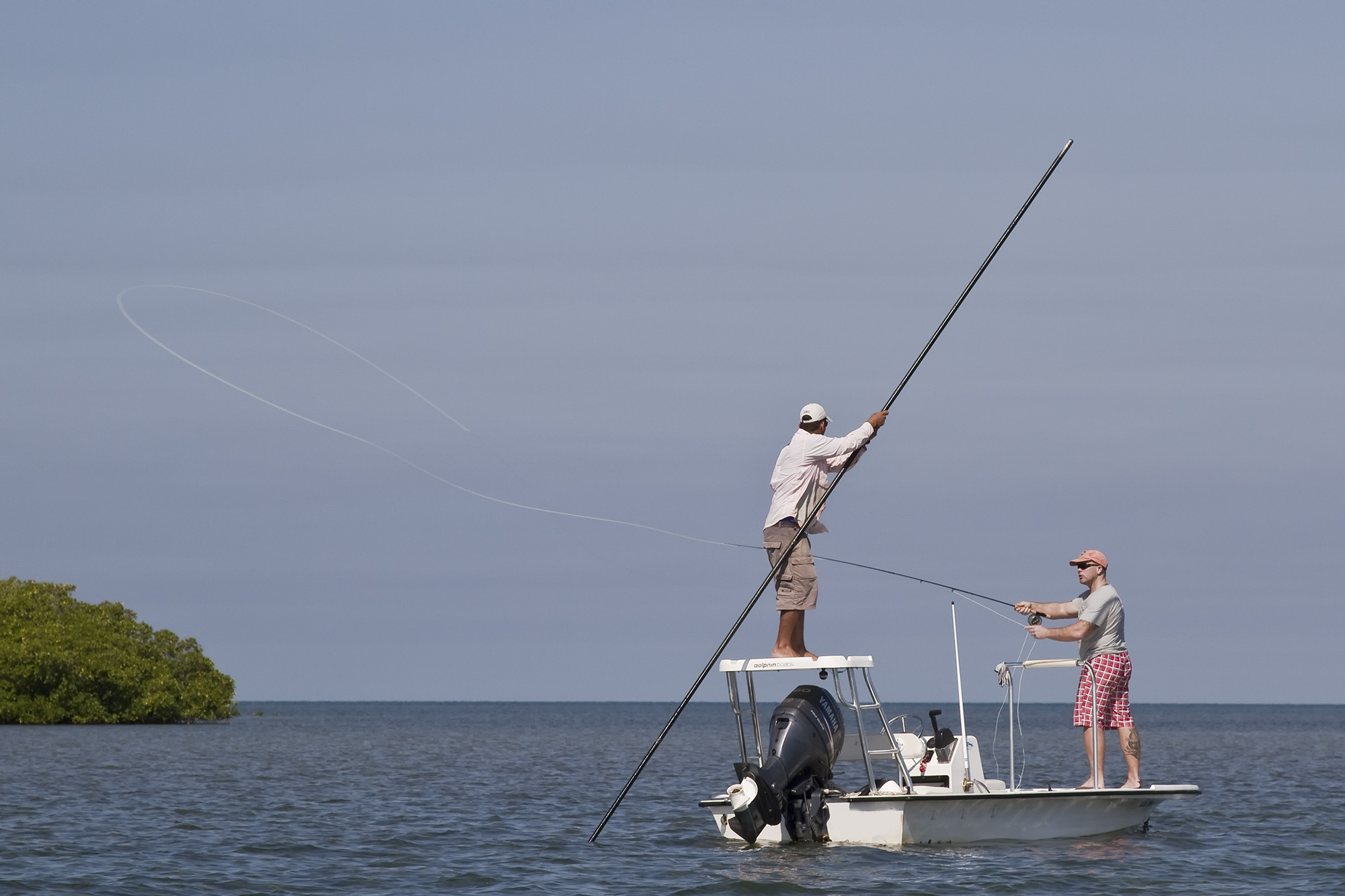
When I asked some guides about this privately several told me that if they can choose their own best fishing time they would definitely go during a neap tide. Full moon, in combination with spring tides, seems the worse of all because the bones can feed at places they normally have no access to and they can even get deep into the mangroves. My personal theory is that on some occasions during a full moon they feed very well at night and I indeed experienced this in Cuba in 2010 during the lasts days of our fishing. Those were the poorest days of our trip for catching bonefish. I strongly believe feeding at night makes them lazy and less aggressive during daytime. In a worst-case scenario they can even completely vanish without trace.

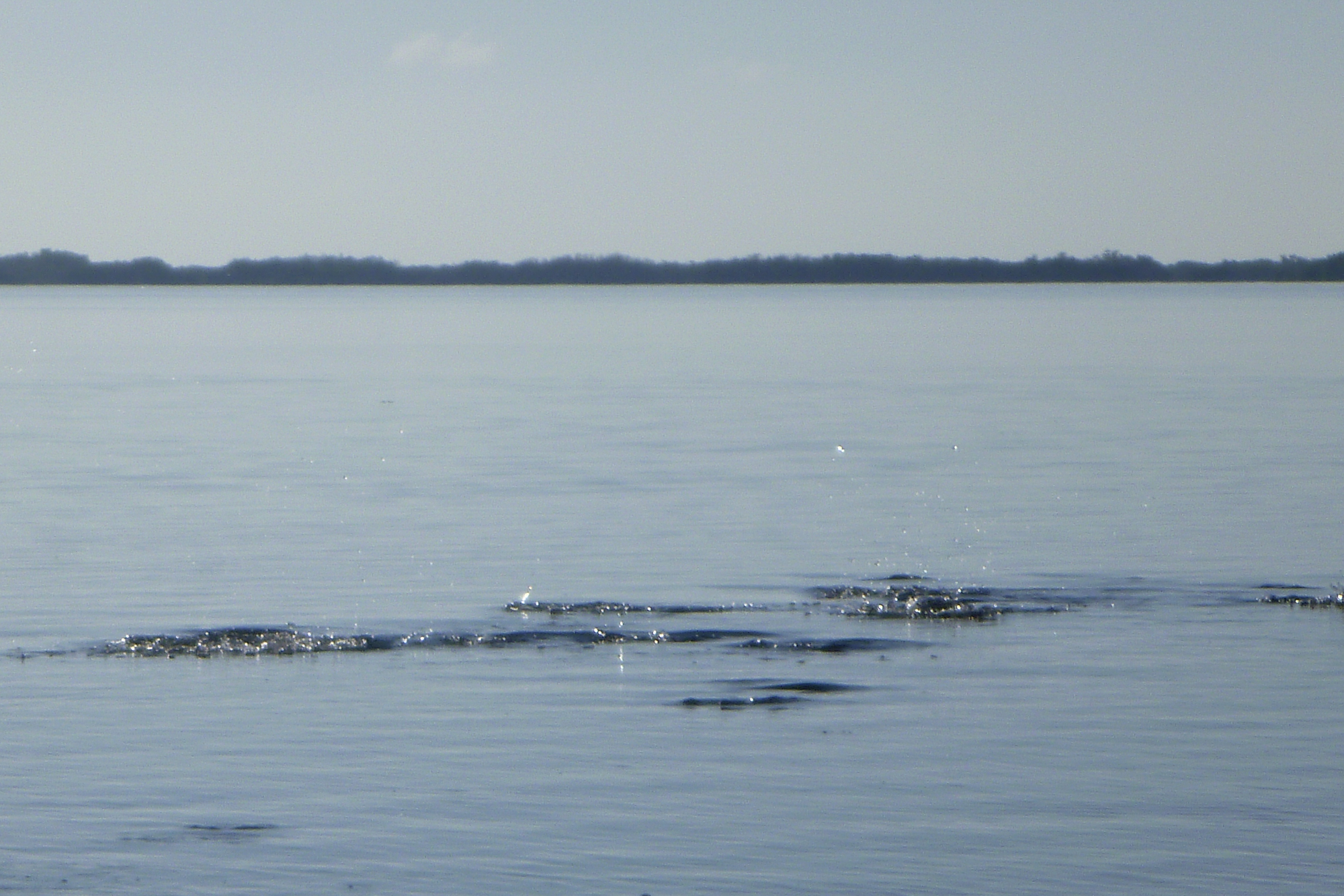
I had a similar experience when fishing the Maldives in 2014 when we also fished during a full moon period and our catching results were the poorest of all the trips that were made that month. All the fishermen who fished before or after our trip all caught much more fish than we did!
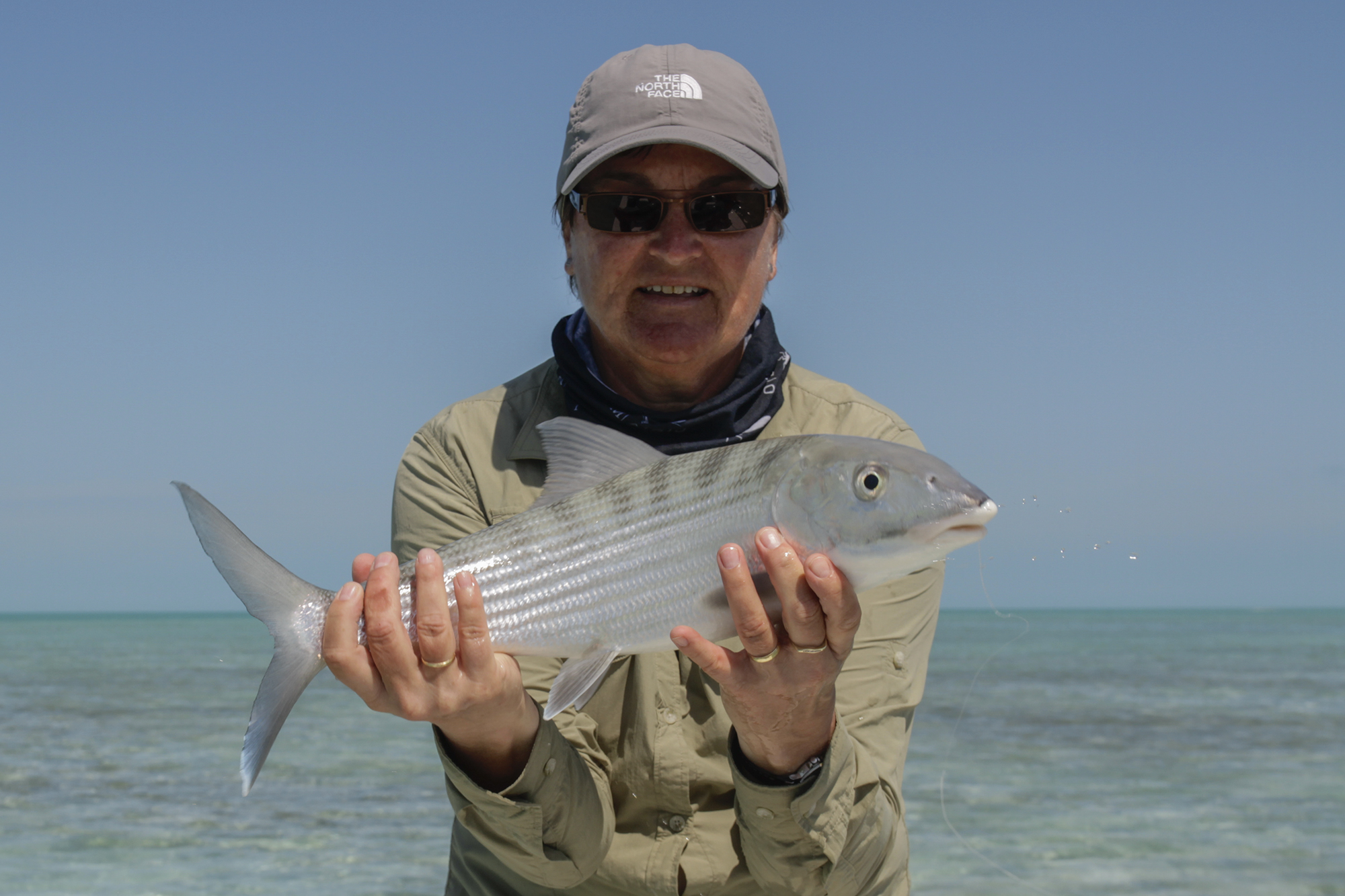
The next morning we get up early and after breakfast I collected all my fly-fishing gear, clothing, flies and tools. Our plan was to set up our tackle with the guide and in company of Sandra, so she could get a really good idea of what equipment is most popular, how many rods you usually prepare, and how long it takes. Roberto had organized everything so we were quite sure that he had arranged everything as perfectly as our snorkelling. Jose our guide arrived punctually at 6.30 a.m., and we set up four rods for both of us, a 7-weight and an 8-weight for bones, a 9-weight for permit and a 10-weight for tarpon. The forecast said there wouldn’t be much wind so a 7-weight would have my preference for bonefishing. The heavier 8-weight rod was still set up though, just in case there was more breeze than expected because the plan was to go out for quite a while

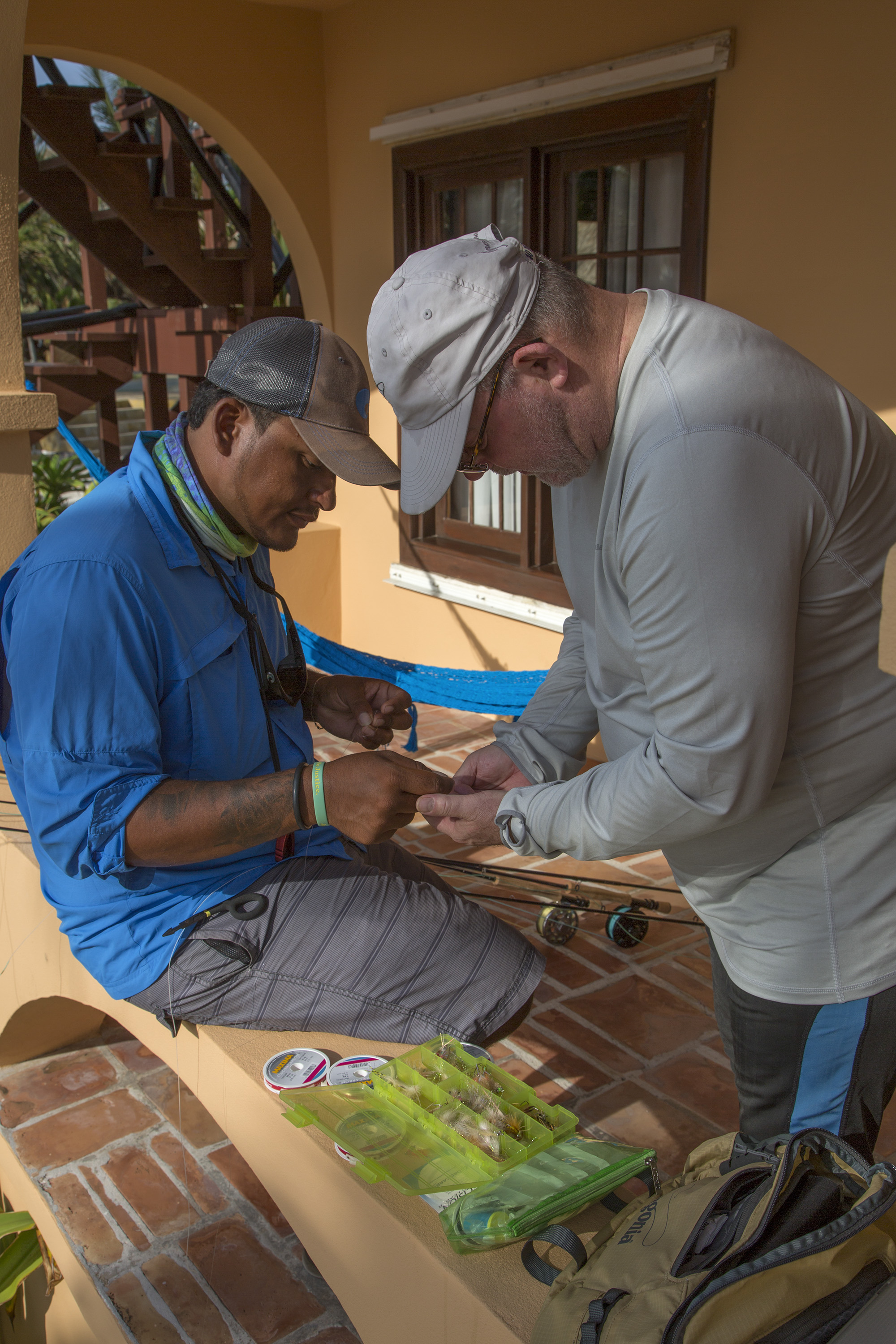
If you fish mainly in wind-protected areas, I even recommend using a powerful 6-weight rod, and skip one of the others. Playing a bonefish on a 6-weight rod is quite spectacular and something you will remember forever. I always set up the rods completely (including flies) before setting off, because from lessons learned from the past, we may actually catch a few good fish on the way to our fishing spots. More than once we have caught a few really nice fish simply because all our equipment was already on standby. Another reason why I like to be prepared before I go out is because I once saw somebody lost his rod tip when it fell in the water as he trying to put his rod together in the boat. I still have the image of that in my mind to this day and it was a good lesson to learn.

The clothing you wear when fishing in tropical conditions is important to consider, and without doubt you need a shirt with long sleeves with at least 50+UPF sun protection built into the fabric. Nowadays there are many fishing shirts special designed for tropical conditions, but my favourite by far is the Patagonia Tropic Comfort, with or without a hoody, and it has built in protection for your hands. Sunscreen lotion with a minimum protection factor of SPF 50+ is also essential.

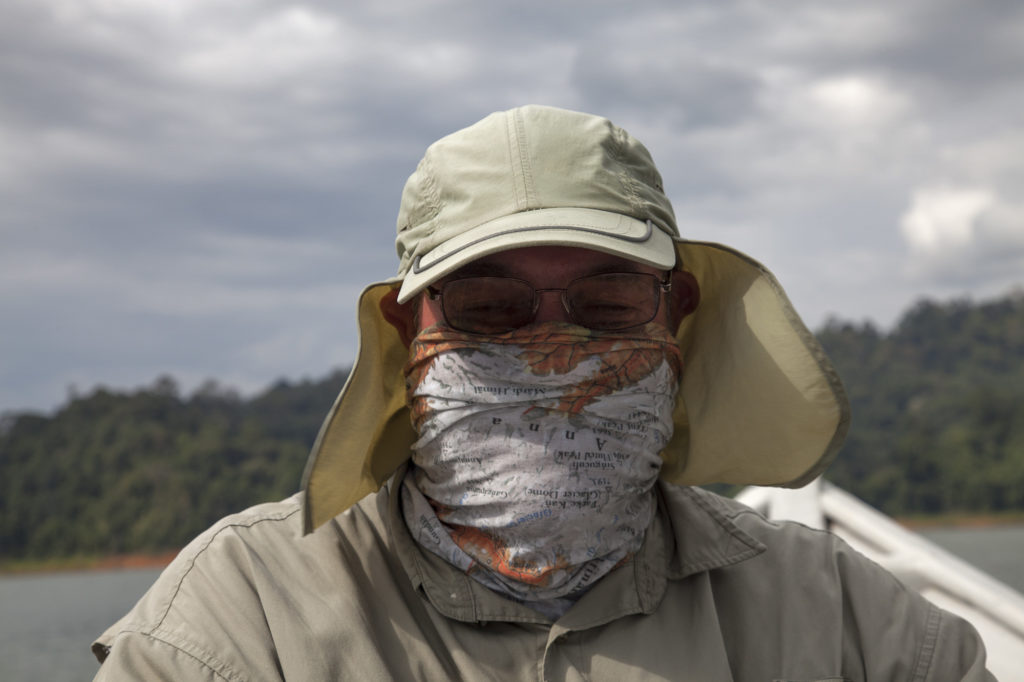
Let’s get into some fishing now. Jose guided us through the channel in San Pedro to the other side of the Island. Here the wind was far less and from there we went to one of Jose’s secret spots; a small, hidden lagoon with crystal clear water and lots of seaweed. It was completely surrounded by mangroves and Jose wanted to try our luck on baby tarpon first. At the end of the lagoon we spotted feeding activity under some overhanging mangrove branches as soon we got in. Jose told us they were baby tarpon and already my hands were itchy. Jose manoeuvred the skiff perfectly through the small entrance and quietly moved the boat into casting range of the tarpon, but suddenly a large manatee went totally nuts and disturbed the entire lagoon by going in all directions trying to get out as quickly as possible. It made the water milky and scared all fish away as well. We had all clearly overlooked this amazing animal that was relaxing or feeding in the lagoon and it got panicked as soon we got too close. I must say it was well camouflaged and because all happened so quickly that we were not able to see much of our first ever manatee, nor even take a picture of it, but it indeed made the first fishing action quite spectacular. It was useless to wait until everything had calmed down again, because the lagoon was simply too small and the impact of this large manatee too enormous. However, it was a very exciting experience and a big part of the adventure, I might add.
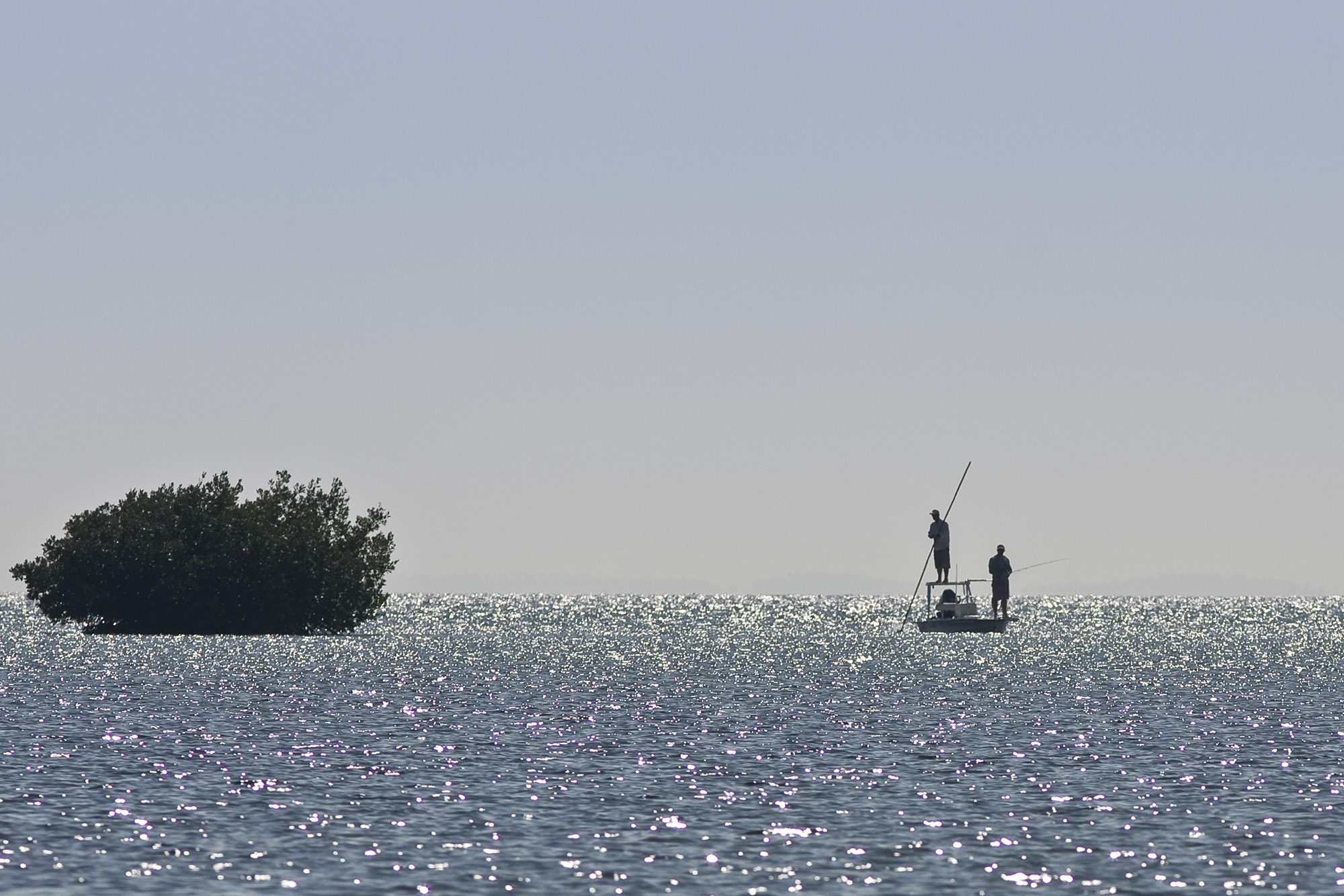
We than went to a favourite bonefish spot of Jose’s and when he had poled the skiff into some nice shallows we counted six bonefish feeding quite close to the shore. They were not big, but worth a try. I really wanted to get into the swing of things so as soon the boat was in a perfect position I cast. But I needed three casts before the fly was presented where I wanted it to be because twice the small shoal moved off in a different direction as soon my fly hit the water. Wow, they clearly were lot shyer than in Cuba or the Maldives, but I liked the challenge. I waited a few minutes and once they moved in our direction I was finally satisfied with my cast. I waited a few seconds and slowly started to move the fly. Two fish followed it immediately and when Jose loudly called, “Strike”, I automatically set the hook. I must confess honestly that I didn’t see the fish taking the fly, but it was on and I had hooked my first bonefish in Belize.
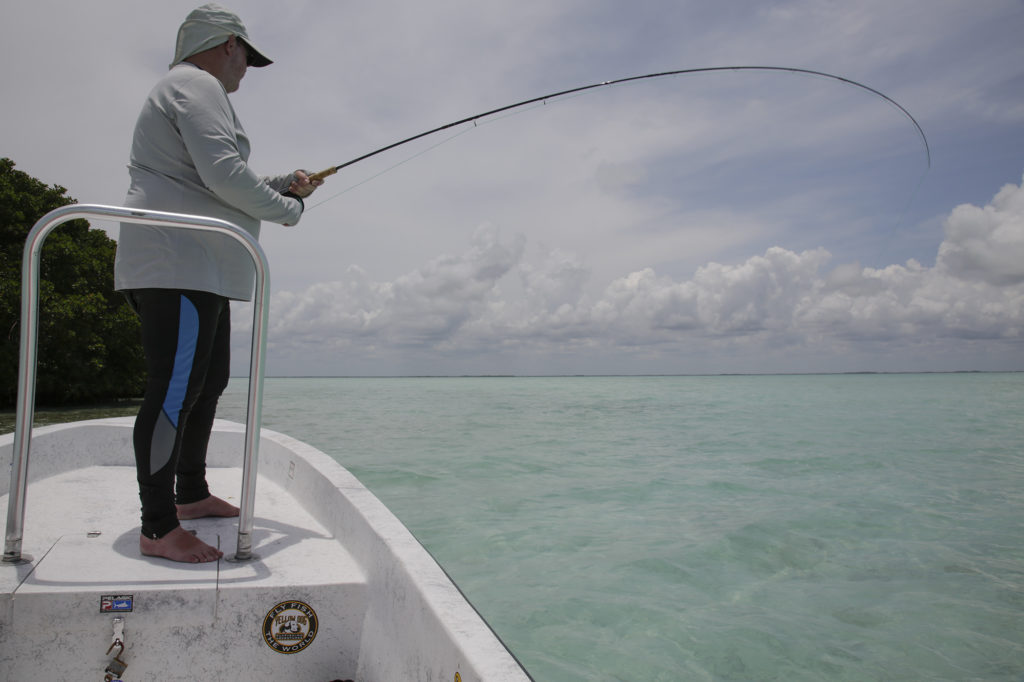
Although it was a small fish, not even 40cm, it gave me a good fight. I landed it properly and released it, hoping to catch a larger fish on camera later. We searched around but playing the fish must have spooked the others because we couldn’t find them anywhere.
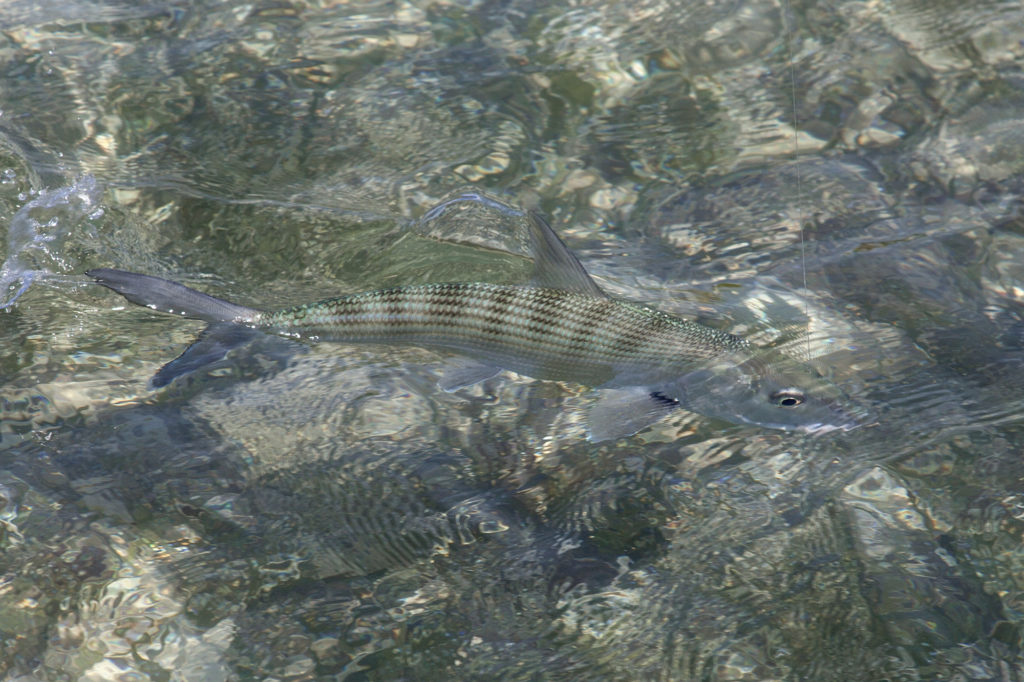
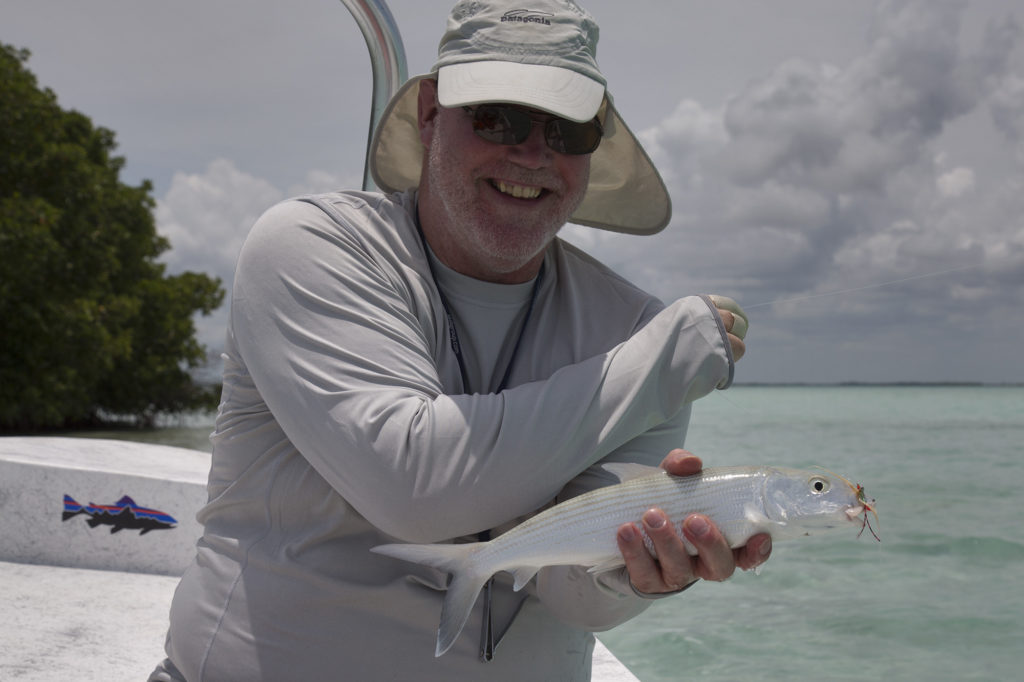
After that we went to several other places but there was no sign of fish. Then we went out about 20 miles in open water trying a huge section of flats in the middle of nowhere, an absolute hotspot. There was one other boat with two fly fishers and they had been fishing for three hours without success. Drifting into the middle of the flats we spotted only four little groups of permit, but all were very ghostly and stayed far outside casting range. The smallest group only had three fish in it and the largest group, not more than seven. Jose told me that on a good day there were many shoals of bonefish around and the permit could easily chase about in shoals of twenty to thirty fish. Sadly there was hardly any activity, nor any signs of fish, and we started to blame it to the full moon. At least, we thought, we had a good excuse. In a last attempt we went even further out to investigate the fishing around two tiny islands about another seven miles away. Poling around extremely carefully we finally found one good shoal of bones and I caught one with my first cast. After playing and releasing the fish we gave Ina a chance, but they had suddenly vanished into thin air like a mystery.
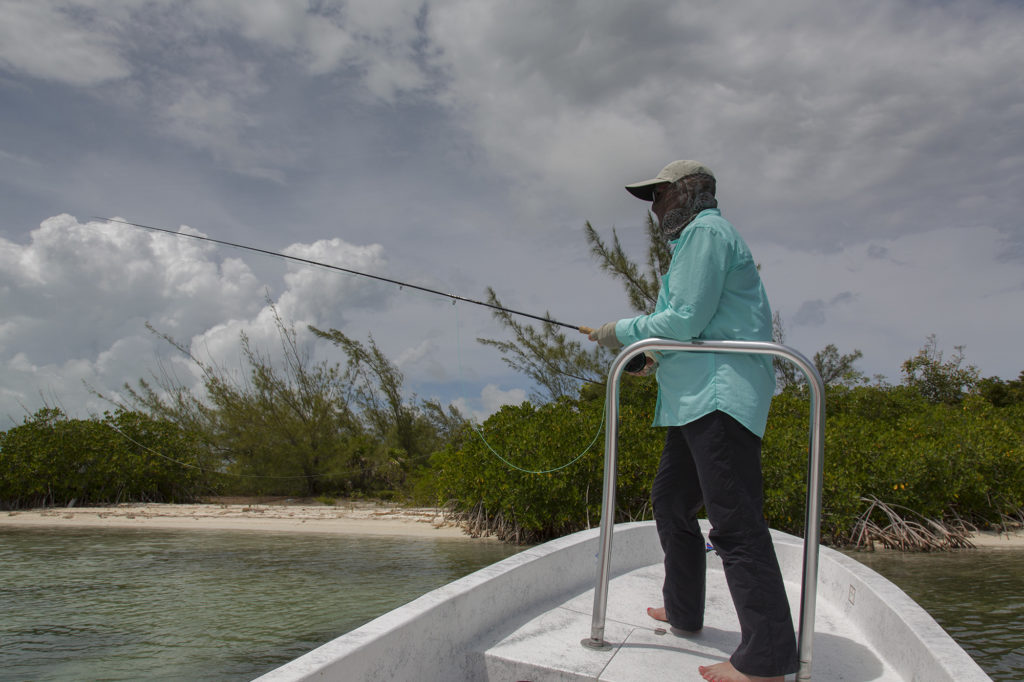
All that was left were needlefish and small barracuda that we could have caught easily by the dozens. Jose really tried hard and we moved one last time to a bigger island but despite poling the skiff almost around the entire island, all we saw were four baby tarpon that were not in any taking mood. In about seventy minutes we didn’t spot any fish at all.

Time went by fast and we had to go back because a pitch-black sky had got up and had started to move in our direction and we were a long way from San Pedro. Jose estimated that we had moved out between 20 to 25 miles and because the wind had started to pick up he decide to go back to Ambergris Caye, a wise decision, because just as we got back the whole area behind us was covered in big white caps. In spite of poor catches we’d had some excellent fishing and Jose was great company. He not only explained everything about the area to us, but also entertained us well. We got back to Portofino just before dusk and after we had cleaned up and had another fantastic dinner, we had a great last evening with Sandra, Jan and Roberto.

What we liked so much about Portofino was the personal atmosphere and service that made you feel at home right away. The staff is a passionate, dedicated and committed team that take good care of their guests, so you can relax totally and enjoying the peace and quiet of Ambergris Caye to the fullest. For us everything was in perfect harmony and when you combine this with nice tropical breezes, picturesque ocean views and delicious food, you feel you are in paradise. If you want to get out and visit the village, or do some sightseeing, Portofino offers a free boat ride a few times a day.
Portofino Beach
Resort contact information:
www.portofinobelize.com
info@portofinobelize.com
Phone: +
501.226.5096
Phone: + 501.678.5096
US Tel: 305-848-1980
US Fax: 253.660.0145
BZ Fax: + 501.226.4272
Skype: Portofinobelize
MSN: PortofinoBelize@live.com
Facebook/Portofinobelize
